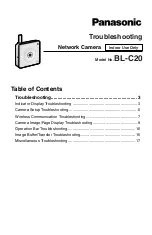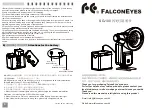
V1.02
Thom Hogan’s Complete Guide to the Nikon D300
Page 562
3. One reason to set a slower sync speed would be to force
the D300 to operate like a backup camera, which might
not have the same top flash sync speed. With two cameras
shooting the same scene with slightly different shutter
speeds you can get different edge effects on moving
objects, which you might not want (if you had two
photographers covering a wedding, for example, and were
trying to seamlessly integrate the pictures). Another reason
to select a slower sync speed would be because your flash
unit requires it (some older studio lights require slower
shutter speeds). Still, those are pretty weak reasons to use
this function (and it would probably mean you’d need to
be shooting in Shutter-priority exposure mode, as in
Program and Aperture-priority you’d be getting the other
end of the shutter speed range).
Custom Setting #E2 Flash Low Shutter Speed Barrier
(Flash shutter speed)
The section on flash that comes later in the eBook (see
“Setting Flash Options” on page <608>) describes an option
called Slow Sync. Essentially, the camera places a lower limit
on the shutter speed that can be used when flash is active
unless
you tell it to ignore that limit. Custom Setting #E2
allows you to modify the limit (and the Slow Sync and Rear
Sync options allow you to remove the limit):
1/60
1/60
second
lower
limit
[default]
1/30
1/30 second lower limit
1/15
1/15 second lower limit
1/8
1/8 second lower limit
1/4
1/4 second lower limit
etc.














































